As of now, the seventh position in the Dutch Eredivisie is held by Go Ahead Eagles, who have accumulated 23 points after 17 matches, with moderate performance in both offensive and defensive aspects, netting 28 goals and conceding 26 goals, respectively.
Moreover, out of the 28 goals scored, 10 were from set-pieces — a proportion of 35.7% — which illustrates the significance of set-piece situations for them, as the most goals were scored by them from set-pieces, tied with PSV, the leader of the standings, in the league.
However, it is commonly agreed that in order to be ‘the best’ from set pieces, you should be the best in aerial duels so that the tactic concludes with scoring headed goals from the vicinity of the six-yard box or penalty spot. Go Ahead Eagles, though, have racked up just 4.24 xG from set pieces — tenth in terms of xG order from set pieces, so it is clear that they threaten the goal effectively but from further distances.
In this tactical analysis, we will discuss the tactics of Go Ahead Eagles that have enabled them to score many goals through set-pieces with a low xG that is less than half of the goals scored.
Corners
We will start with their attacking ideas from corners to prove their effectiveness, but not only by aerial duels, so we will begin with our first idea below, which is targeting the rebound area directly.
Here, the opponent defends with a man-marking defending system with only two zonal players, which means that they can control the markers’ movement far away from the rebound zone, so you can see the attackers standing on the far post dragging the markers far from the rebound zone and the near-post zone where they intend to shoot the ball.
There is a player who initially stands in the rebound zone to move towards the taker to drag the defender with him for a player who started at the back.
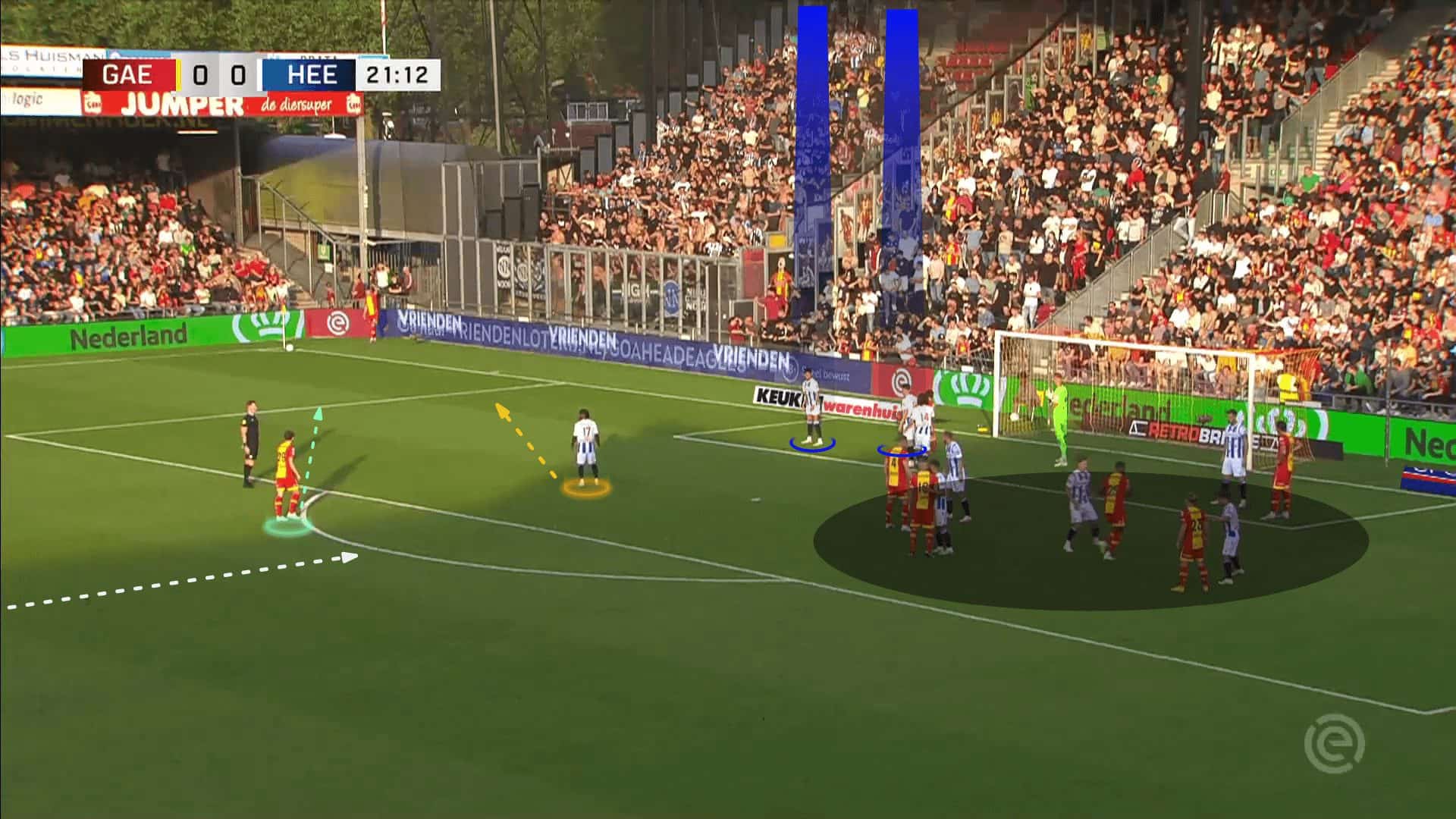
The blue attacker returned instead of the targeted player to secure the counter-attacks. In contrast, the rest of the attackers moved forward, dragging their markers and blocking anyone trying to go to the rebound zone except an attacker who was still standing on the far post for the rebound from the goalkeeper if it happened.
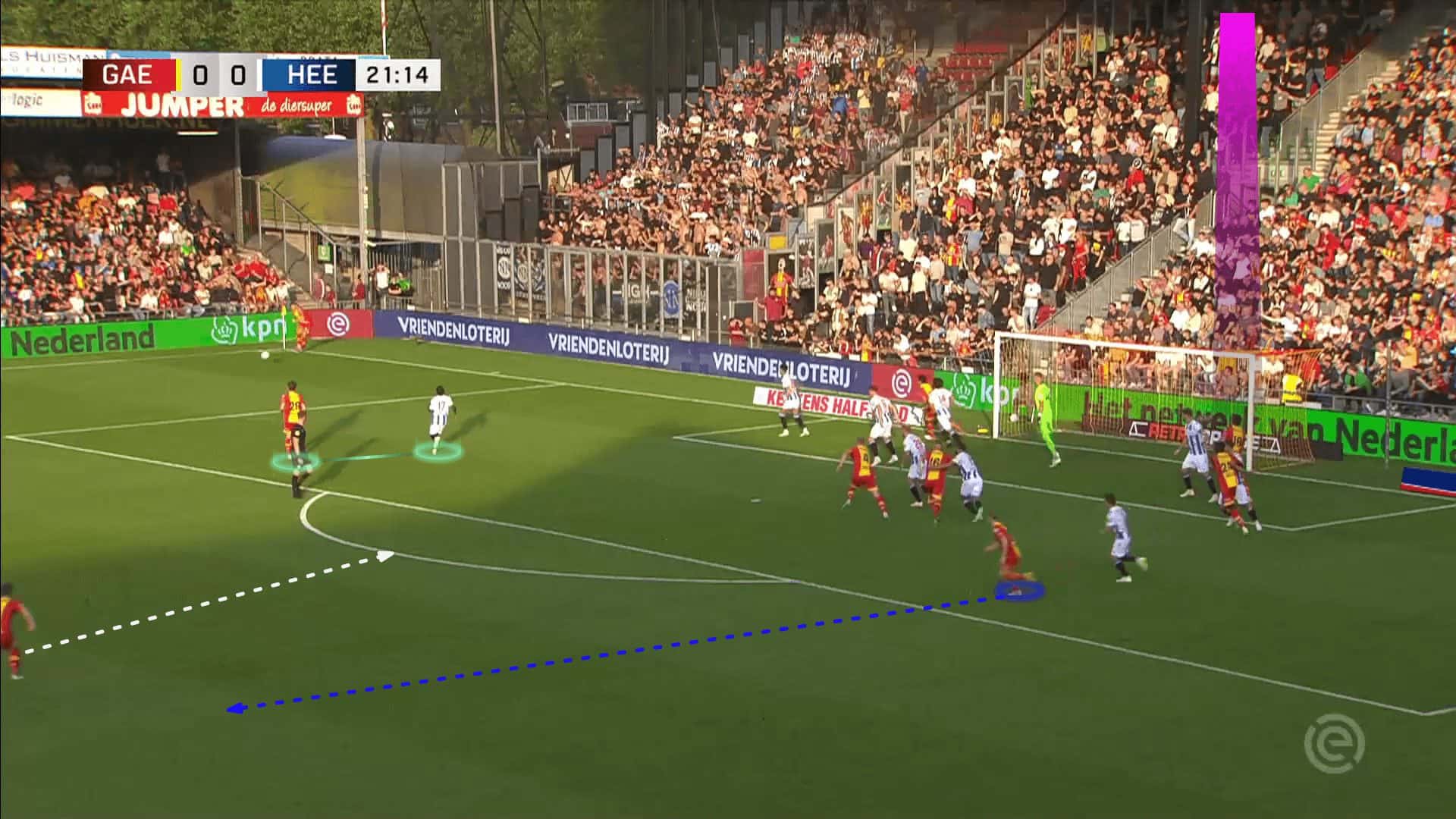
Now, the plan works, so the targeted player gets the ball easily on the rebound zone while there are players framing the ball to be ready for the rebound, and the result is a goal, as shown in the two following photos.
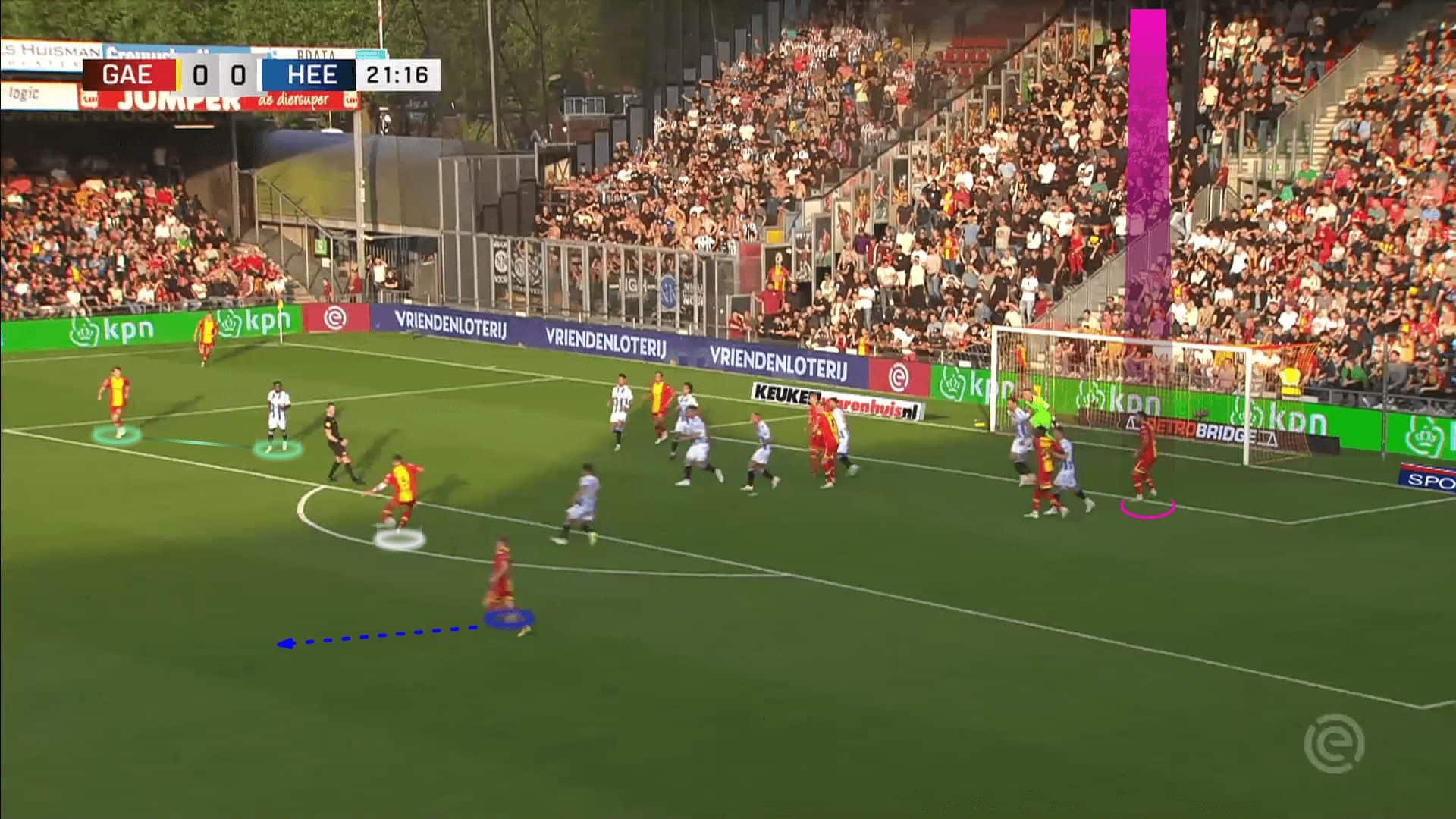
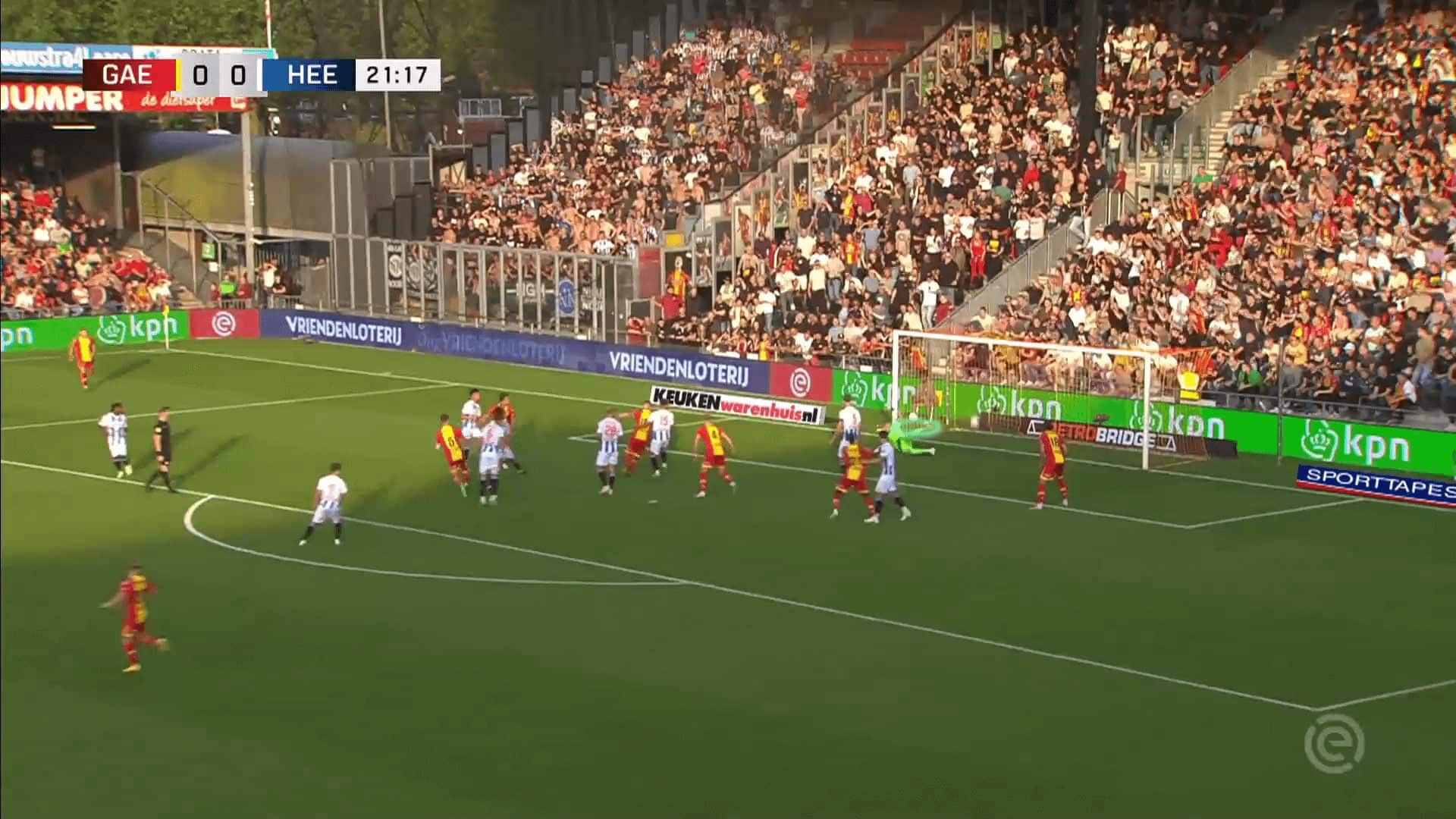
The same idea is performed in the case below, so we can’t say that the previous case is a coincidence. Here, we want to highlight again the double role of the attackers who block the defender at first to prevent them from getting out to the rebound zone. Then, they stand framing the goal to get any inaccurate ball, so you can see that the shot from that distance is too challenging to be a goal many times, so they do this action to increase the possibility of converting the shot to a goal. In the fourth photo, this highlighted attacker receives the inaccurate shot and shoots it to be a goal.
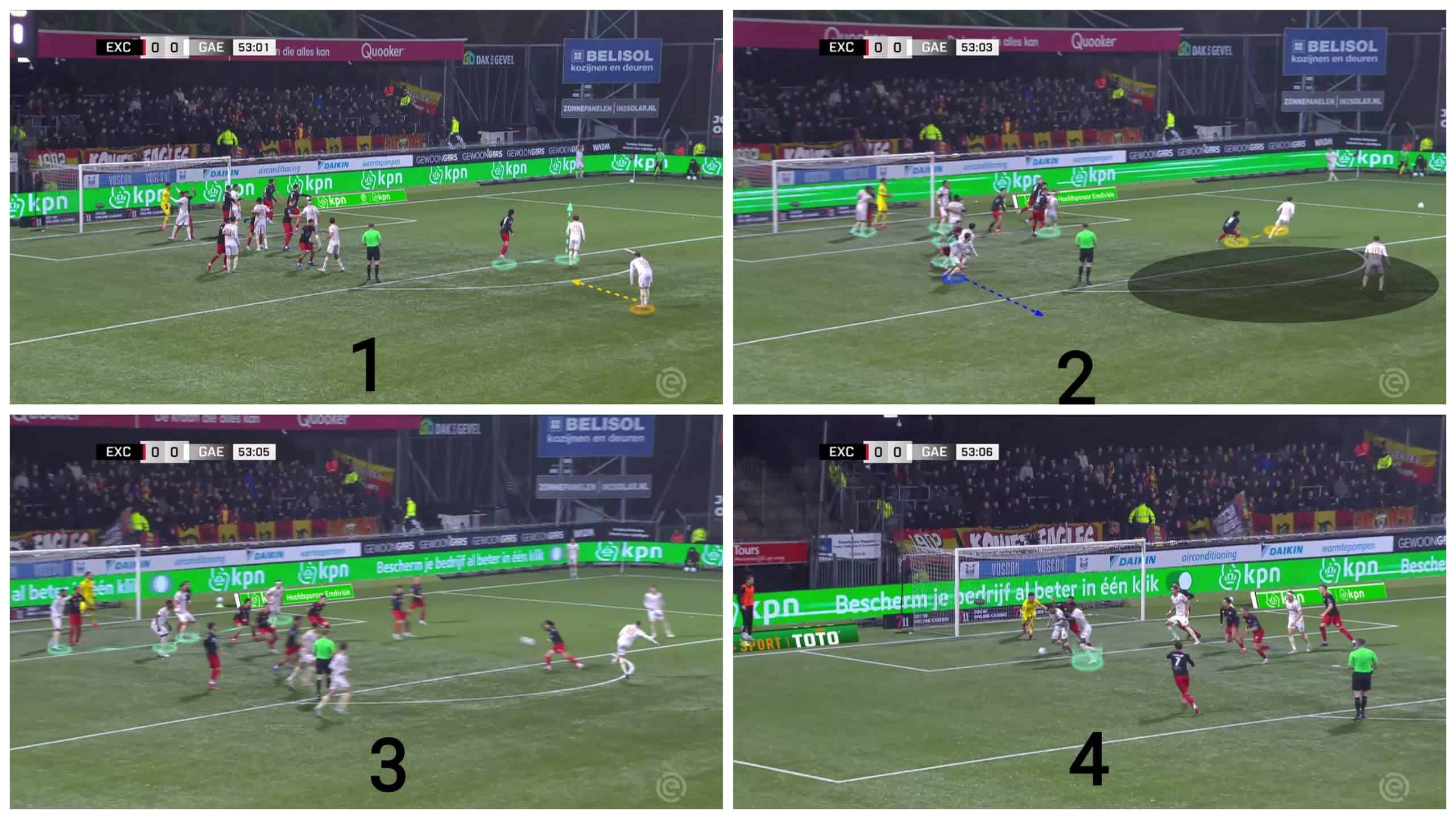
They also have many ideas that depend on many short passes to reach the rebound zone. In the case below, the short-option attacker receives the pass near the taker, which drags the second defender to help prevent a 2-v-1 situation from happening, so he doesn’t give a care to the rebound zone where an attacker receives a pass and shoots, but the goal-keeper saves the ball.
In the second photo below, you can see the critical role of the rest of the attackers in dragging the defenders away and blocking anyone trying to go to the rebound zone.
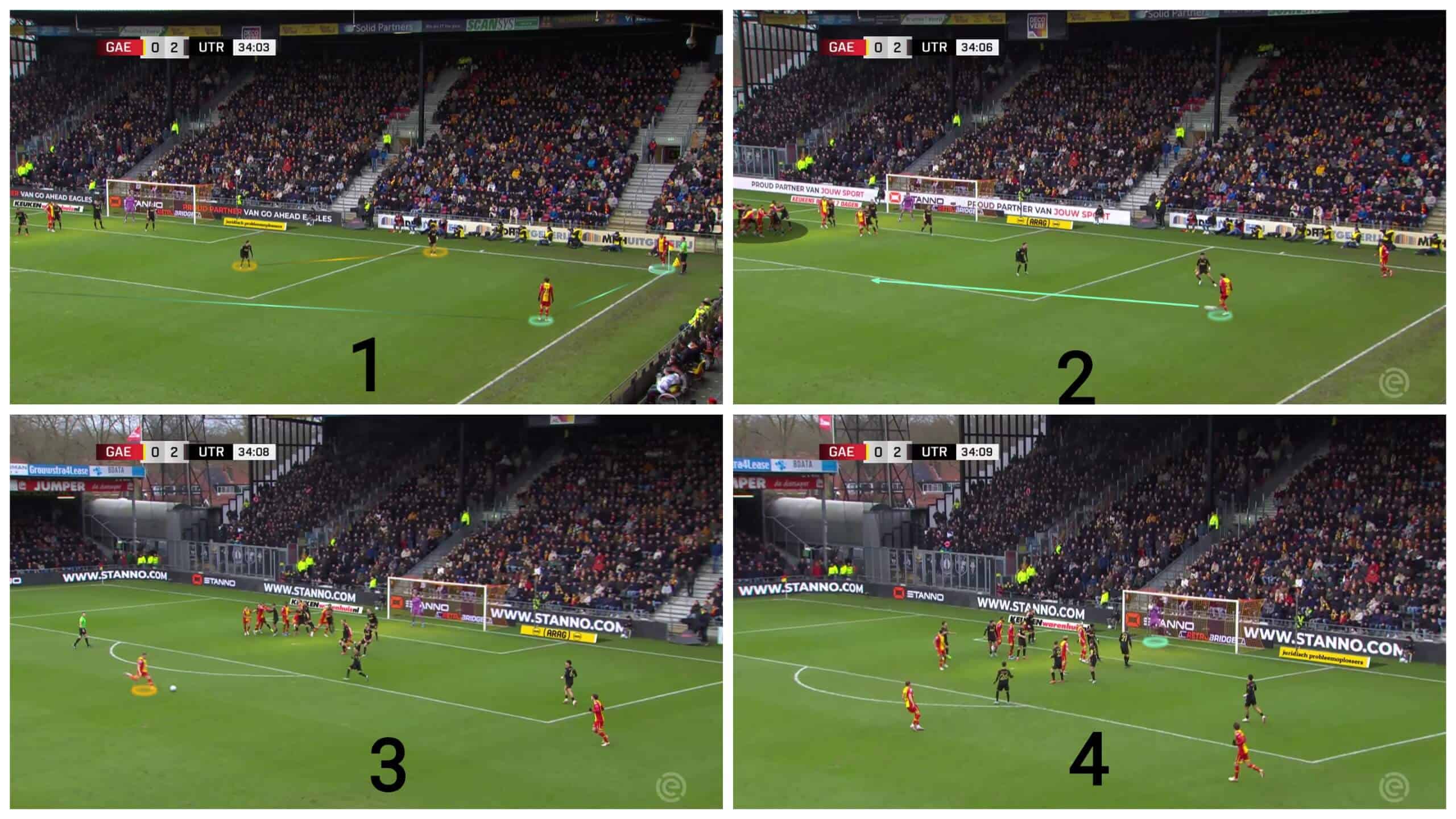
In the previous case, the shot was from a long distance, so they thought about how to reach a nearer space to shoot, which happened in the case below.
In the photo below, they want to use a third-man pass to the rebound player by using a player from the box coming suddenly by the taker’s movement while using a second rebound player out of the shot to drag the opponent’s player who goes to defend the rebound zone, as shown in the two following photos.
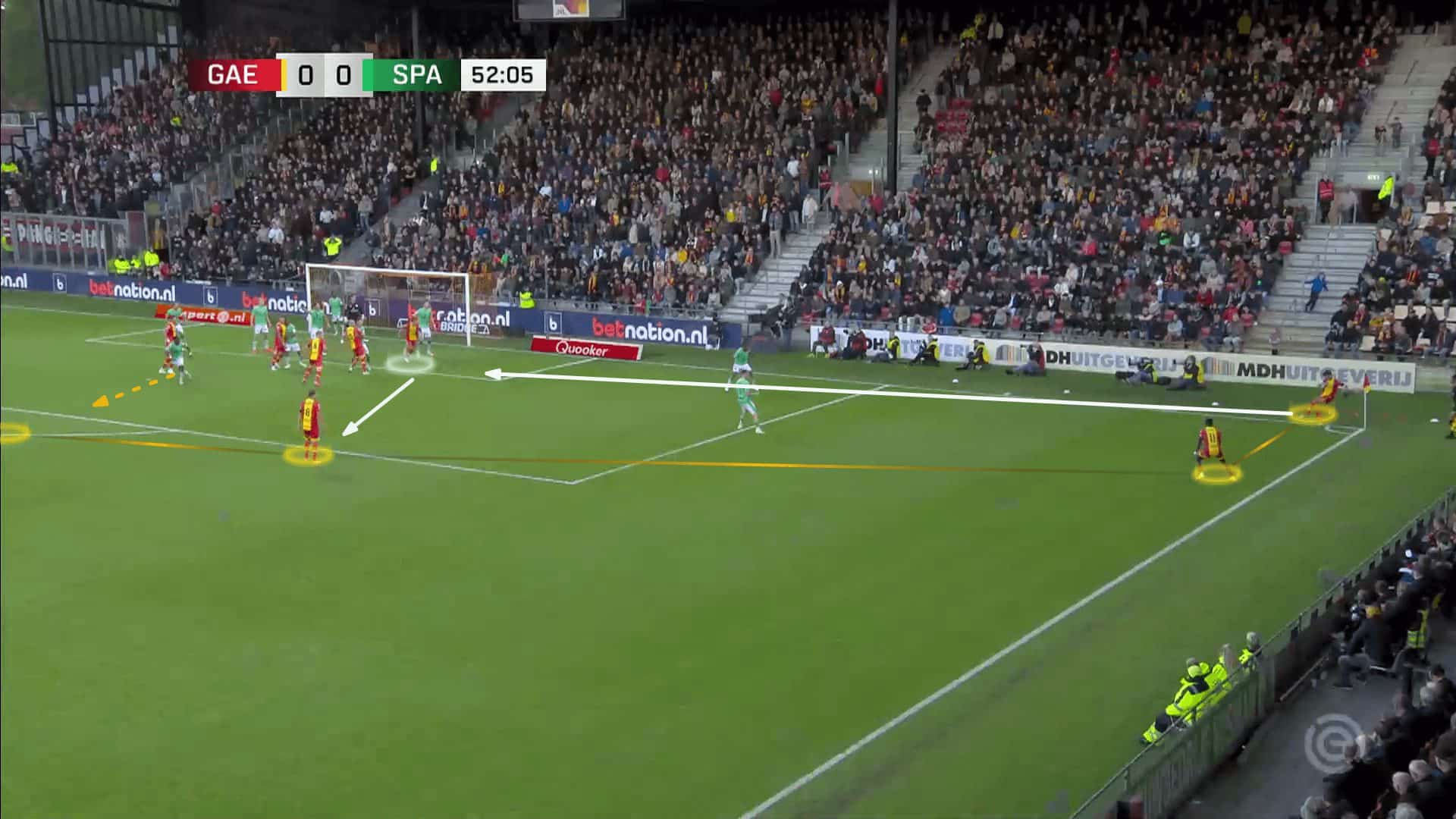
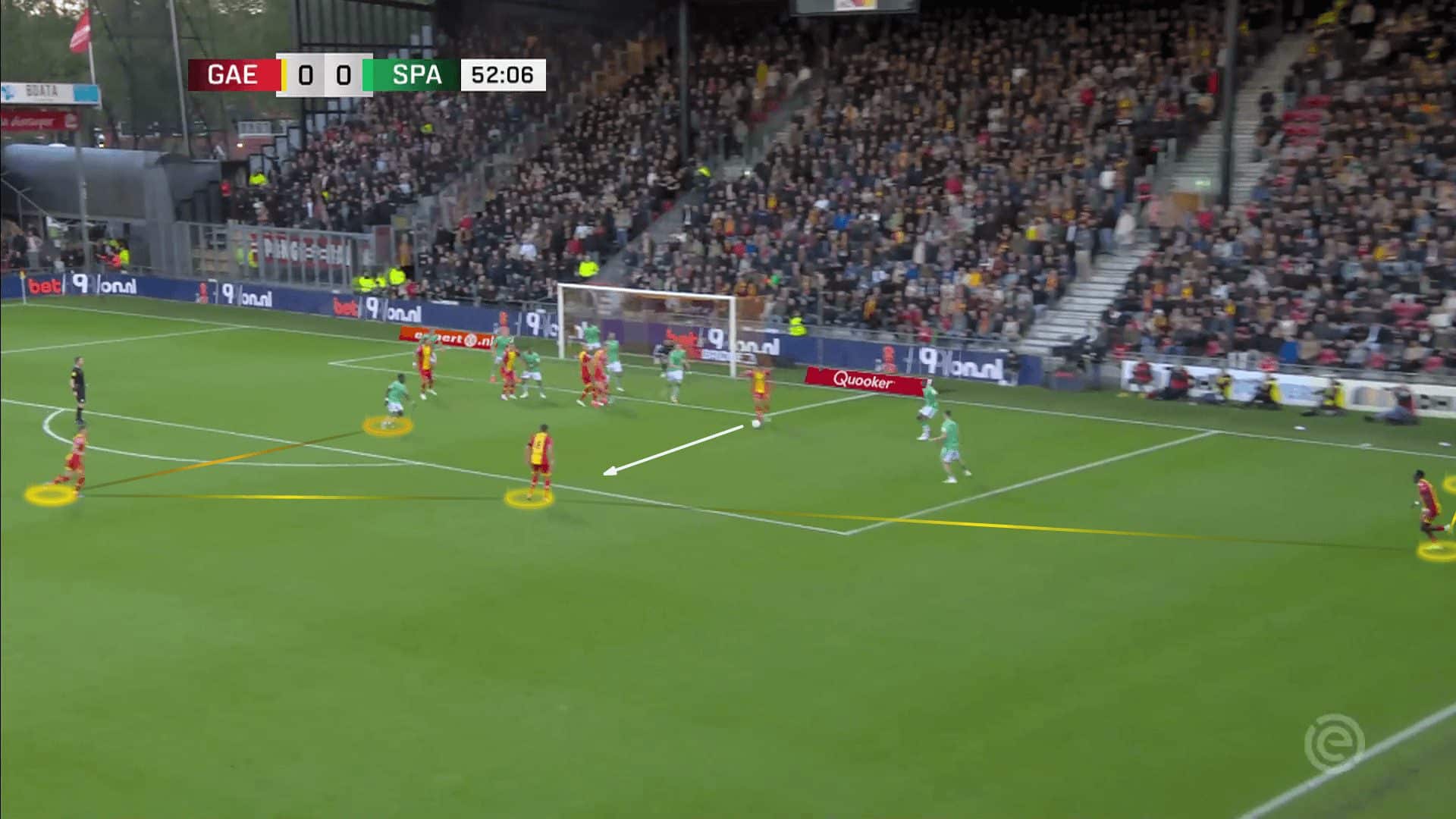
The plan works, so the targeted player shoots a good shot, but it goes near the post, as shown in the two photos below.
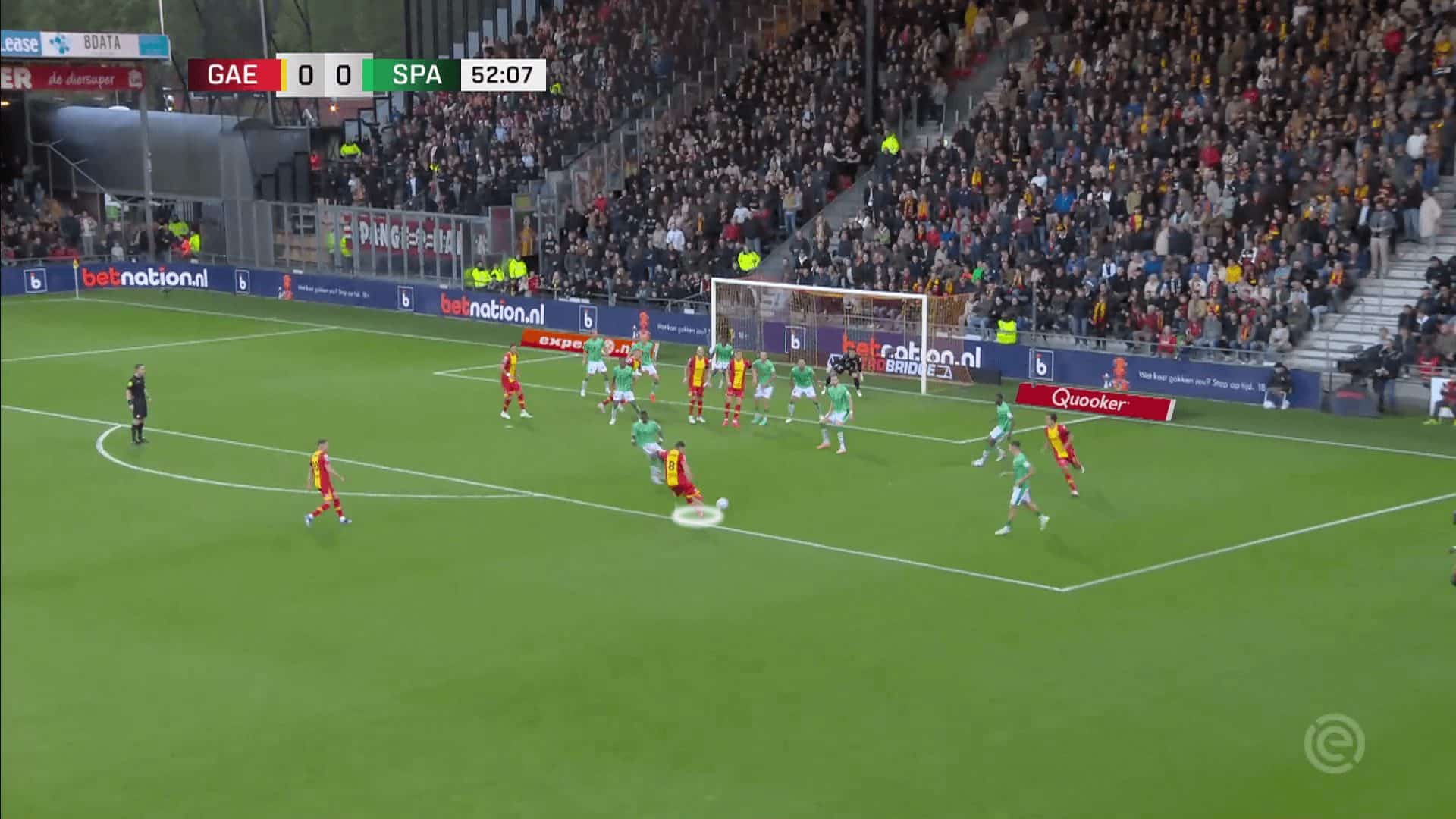

Continuing with the previous idea, they use a direct ground pass to the box, as shown below. Let’s illustrate how they implemented this idea, which can be called a flat passing lane.
When you face a man-marking defending system, you are the leader who controls the movement of the defender, so it is easy to empty all of this passing lane by asking the attackers to stand on the far post while also asking three attackers to stand around the short and rebound areas to take the attention of the short-option and rebound defenders. Hence, the pass is possible, as shown below.
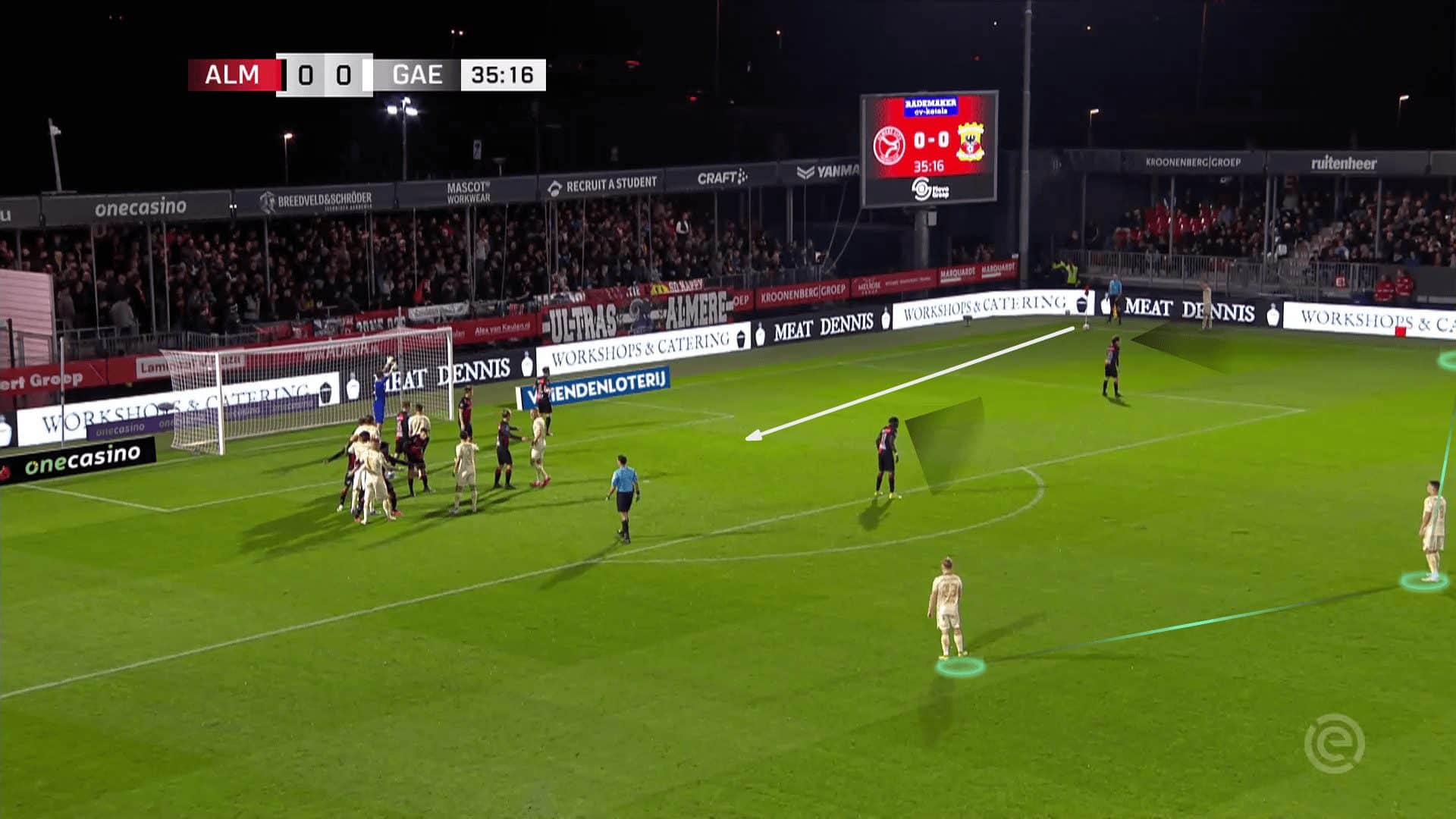
Now, they have only two problems: the two zonal defenders, in red, and how to get rid of the marker of the targeted player, in blue. First, with their markers, two attackers go to the two zonal players to take their attention, trying to block them to prevent them from getting the ground direct pass.
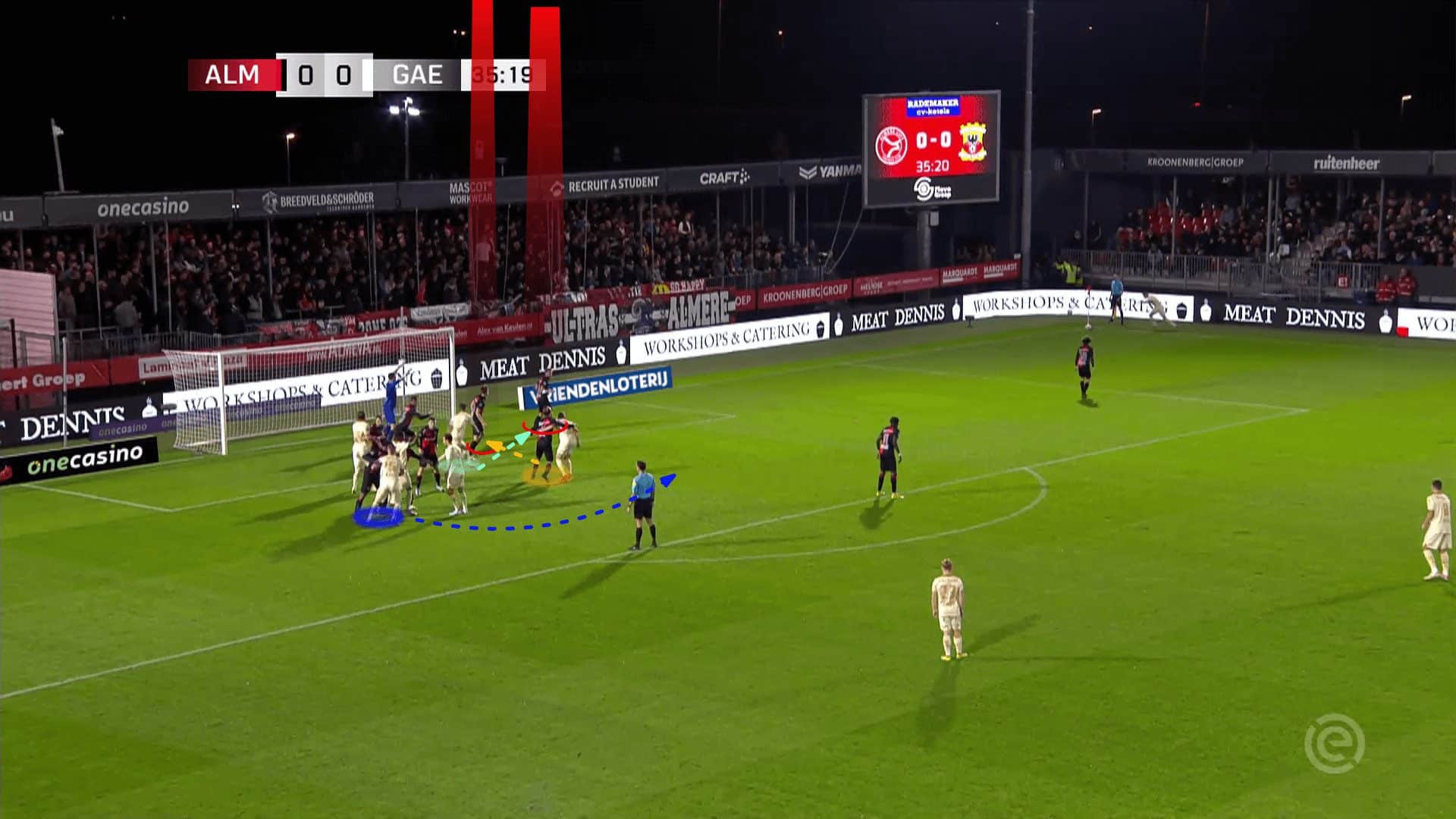
In the second part of the plan, they use another attacker to act as a screen, running towards the targeted player’s marker to block him to free the targeted player.
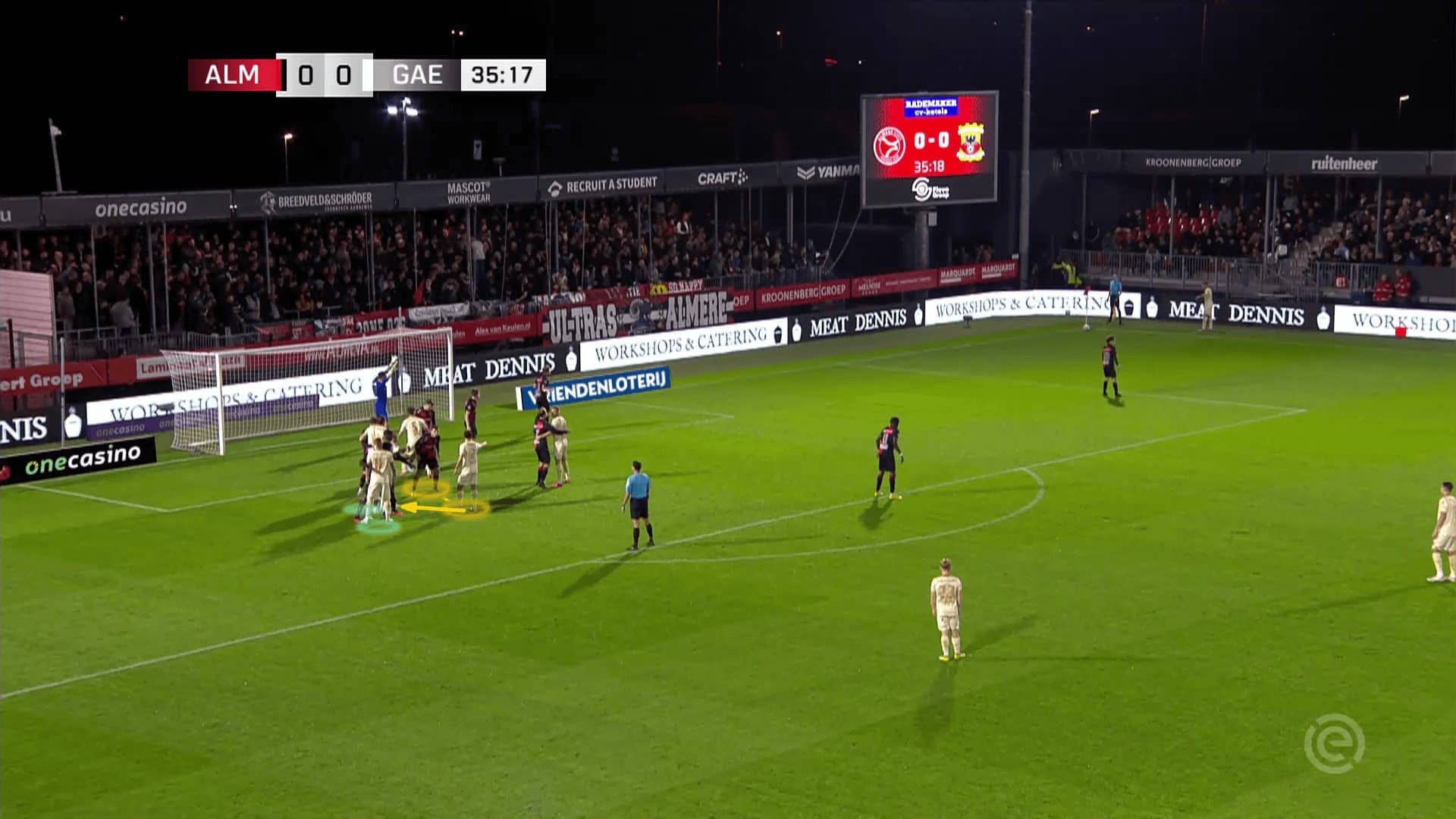
In the photo below, we can see the two parts mentioned above, the red and blue players going towards the two zonal players. In contrast, the yellow player acts as a screen blocking the green player’s marker, but here, the yellow defender realises that trick, so he switches going to the targeted player. Still, this switch gives the targeted player the time to reach before him because the defender comes from long distance, as shown in the two photos below.
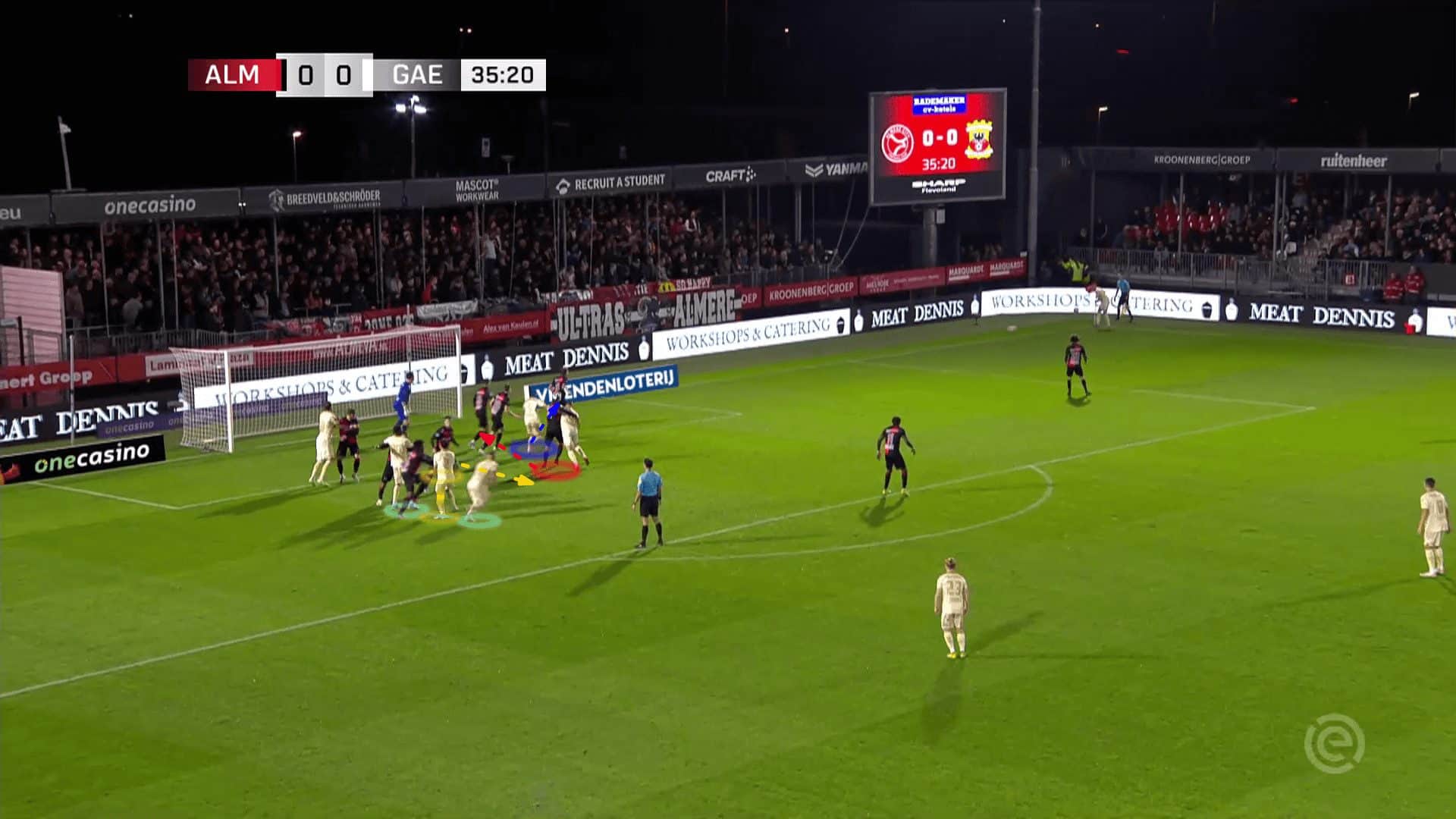
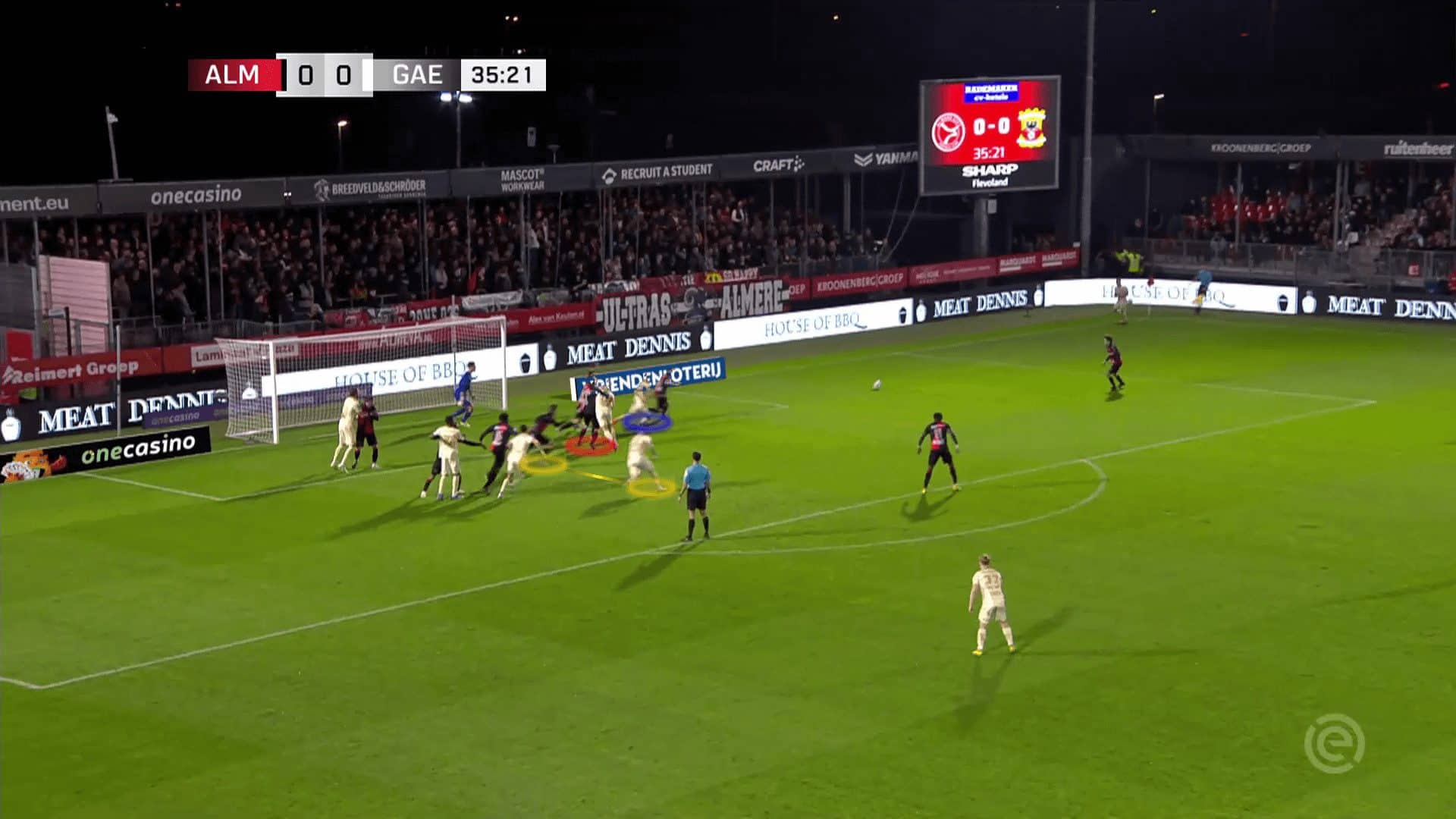
The plan works, so the targeted player shoots the ball from a dangerous area, but the goalkeeper saves it brilliantly, as shown in the two photos below.
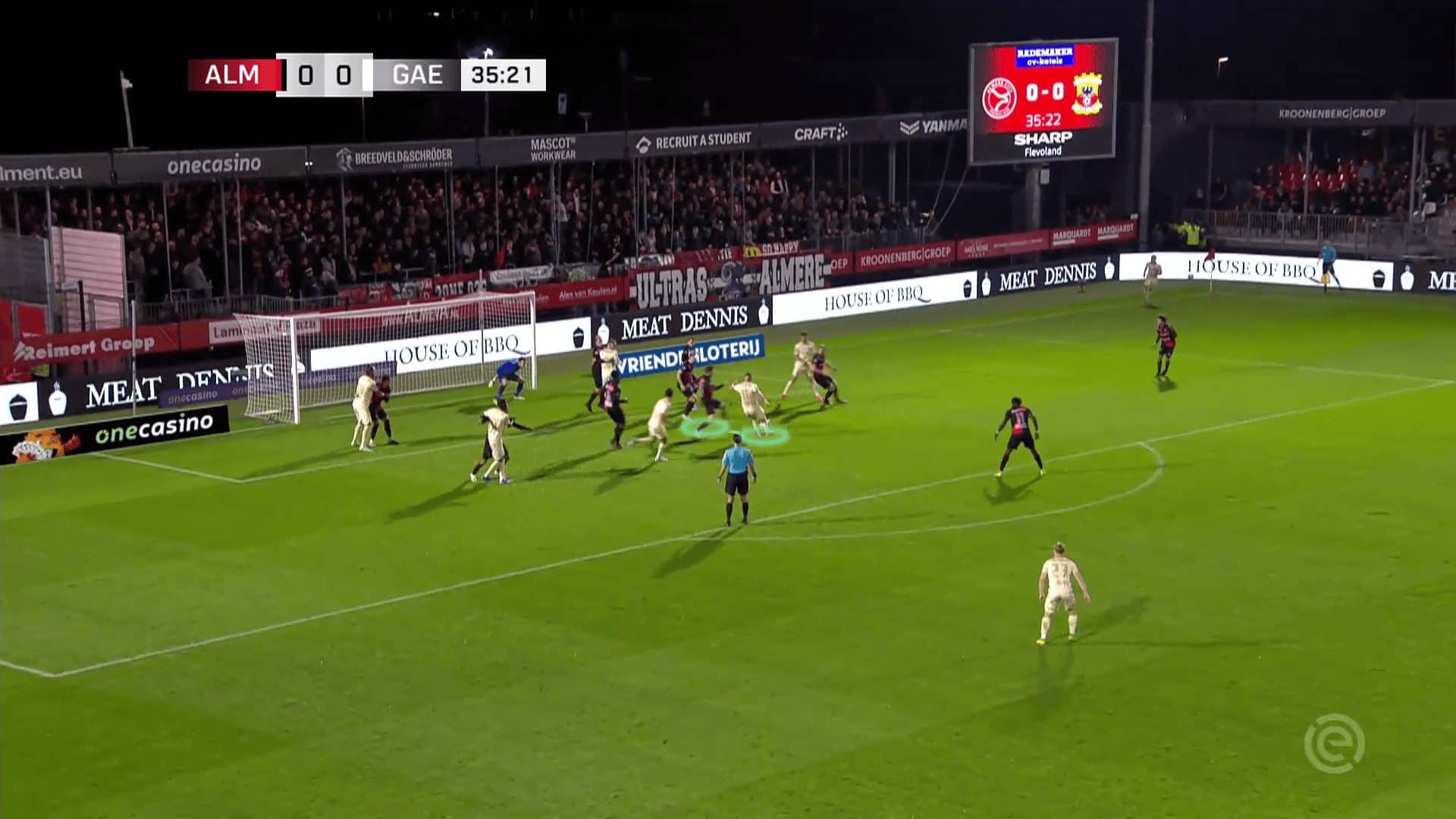
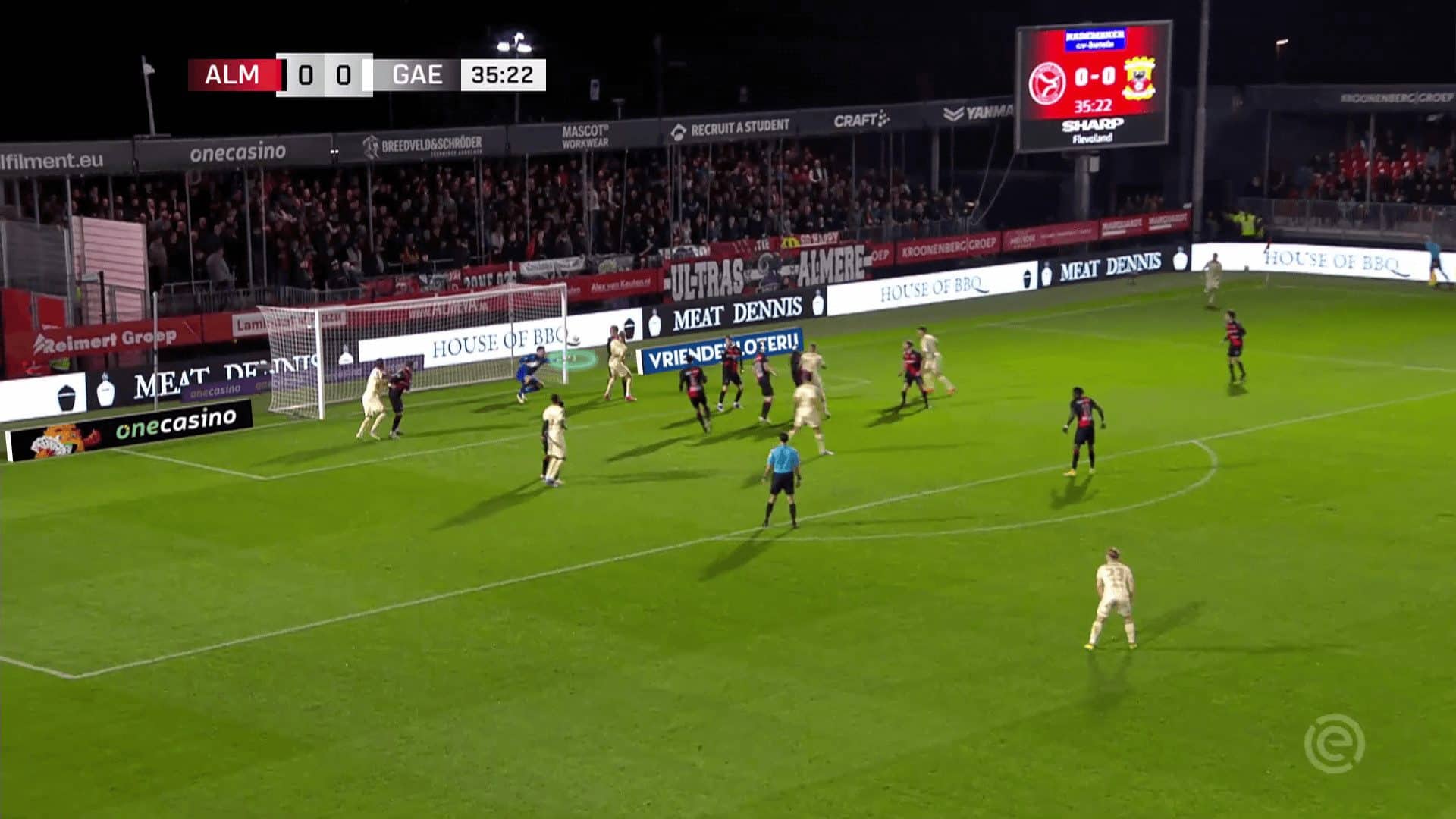
Direct free-kicks
Now, we come to how they are effective in direct free-kicks, so we start with the well-known idea of using a player as a wall to prevent the goalkeeper from watching the ball until it passes this player, so his reaction becomes late, so they can score a goal even if the ball doesn’t go in the corner of the goalmouth, as shown in the two following photos. A slight hint should be mentioned: the movement of the attackers to the far post helps distract the goalkeeper and get the rebound.
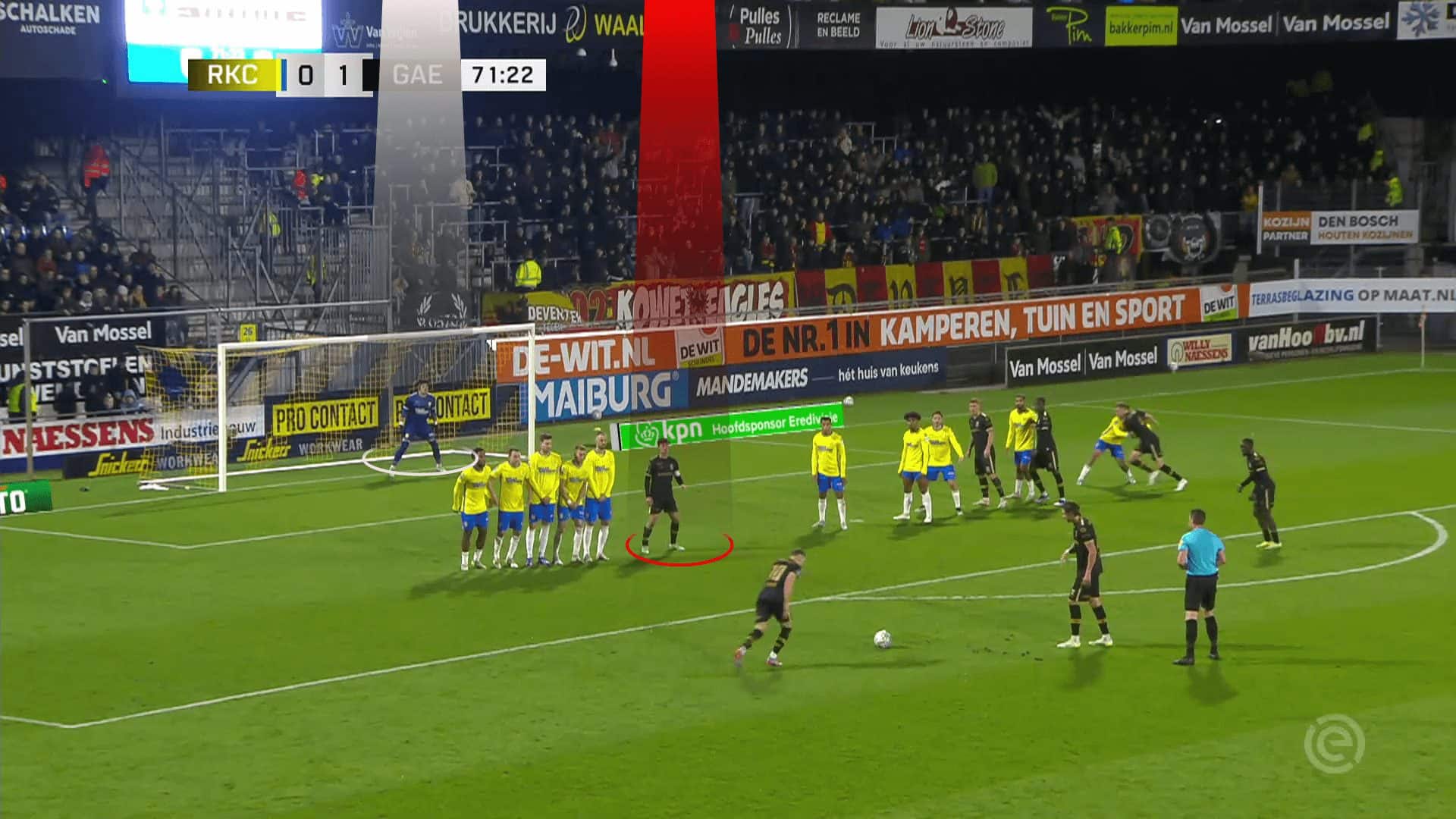
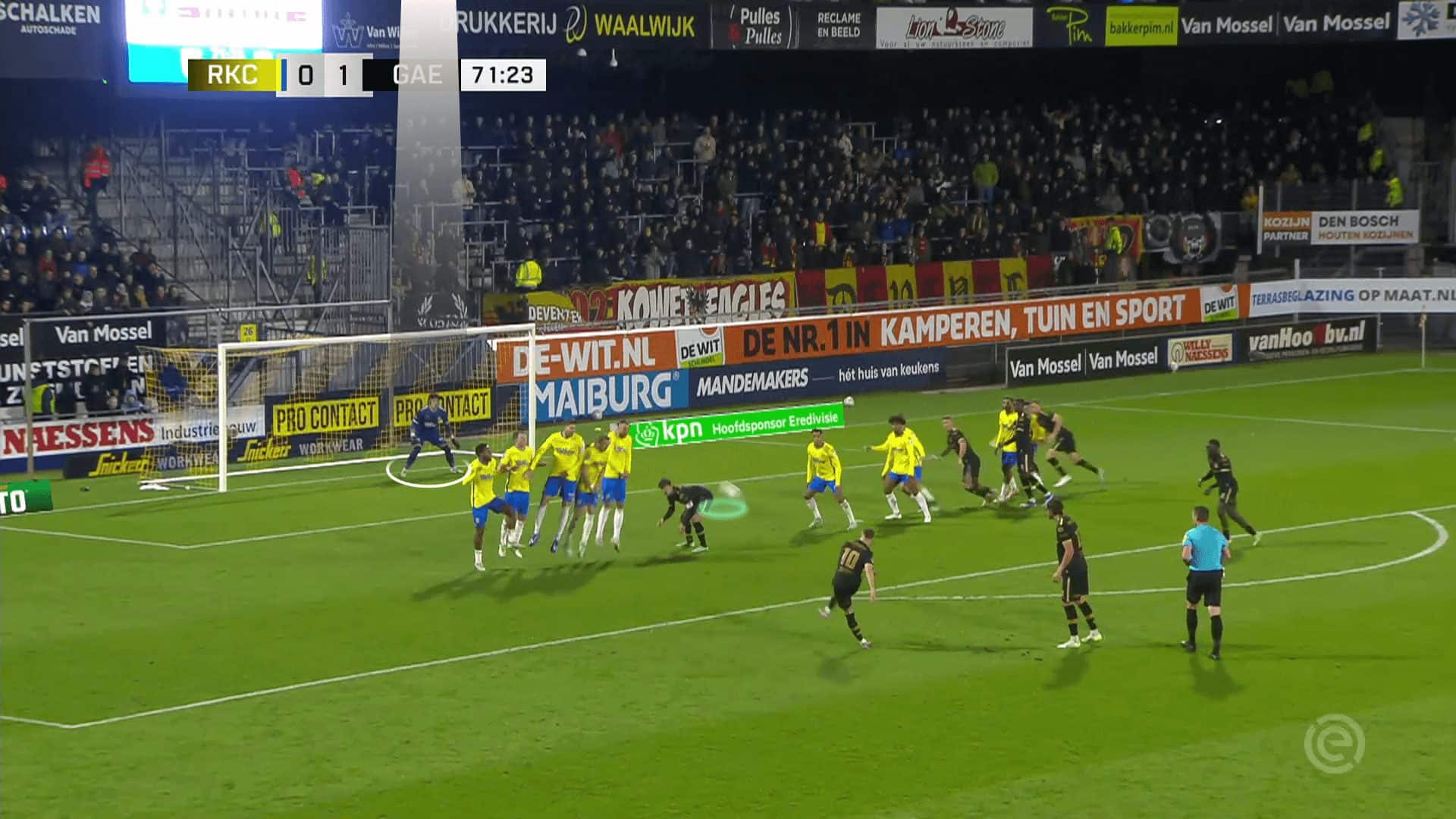
The goalkeeper starts to move when the ball passes this wall player, which means that his reaction will be late, but the shot hits the defending wall, as shown below.
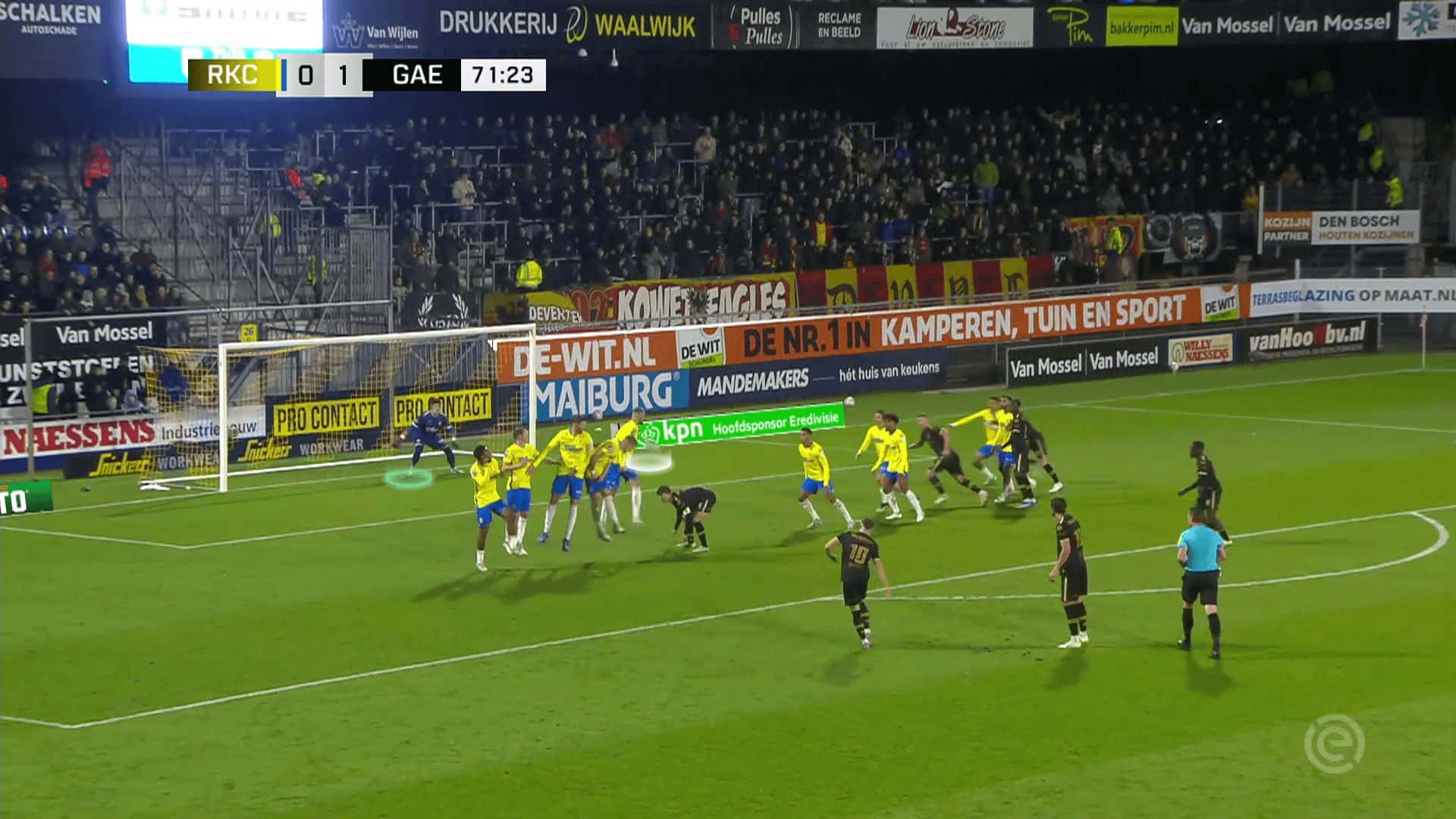
They used a two-player wall to develop this idea more and more, as shown below.
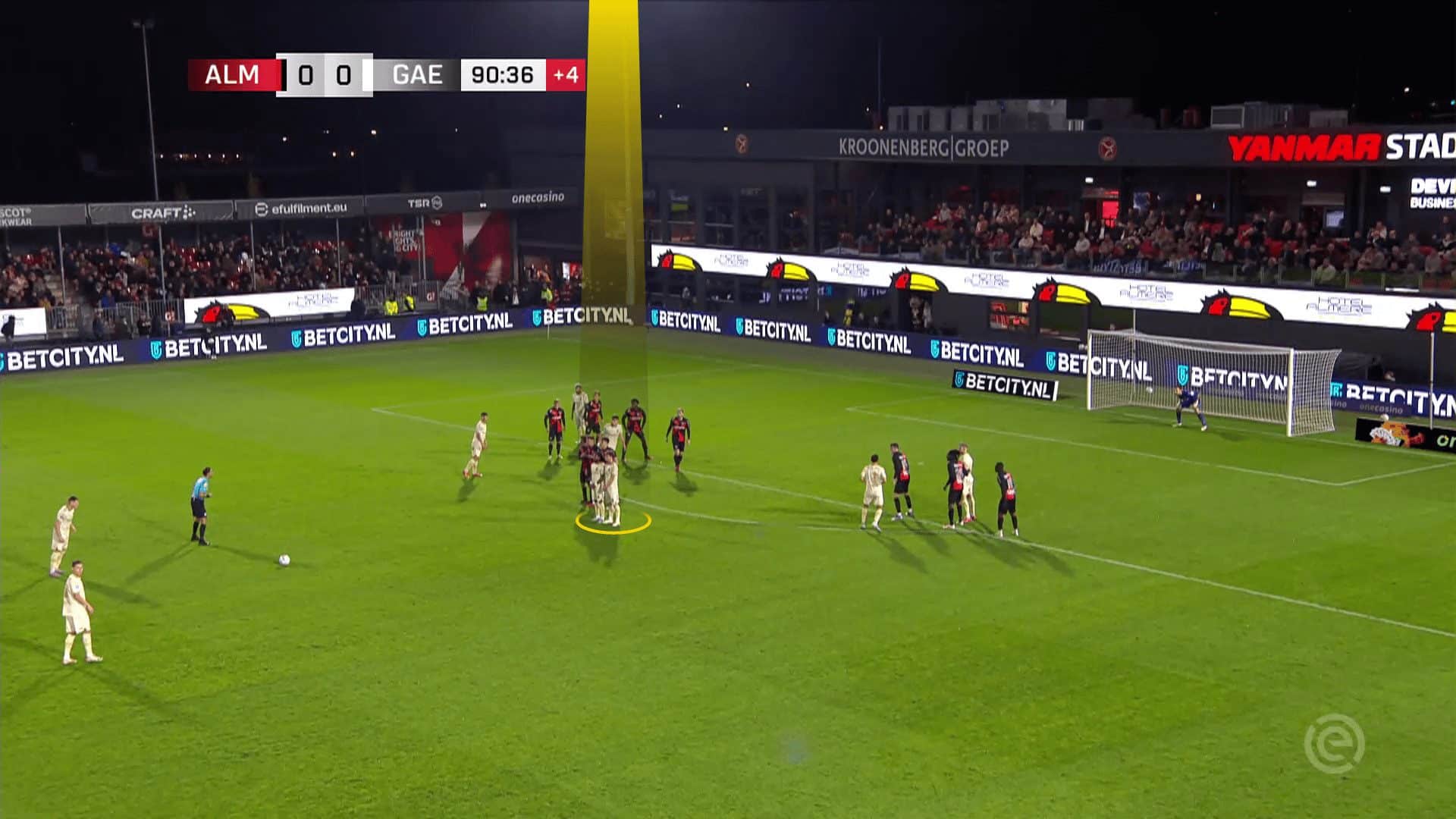
You can see that the goalkeeper starts to see the ball and move when the ball crosses the wall. Still, the shot is in the middle of the goal below, so the goalkeeper can save it while they put four runners framing the goal to get the rebound, but the goalkeeper punches the ball away, as shown in the two photos below.
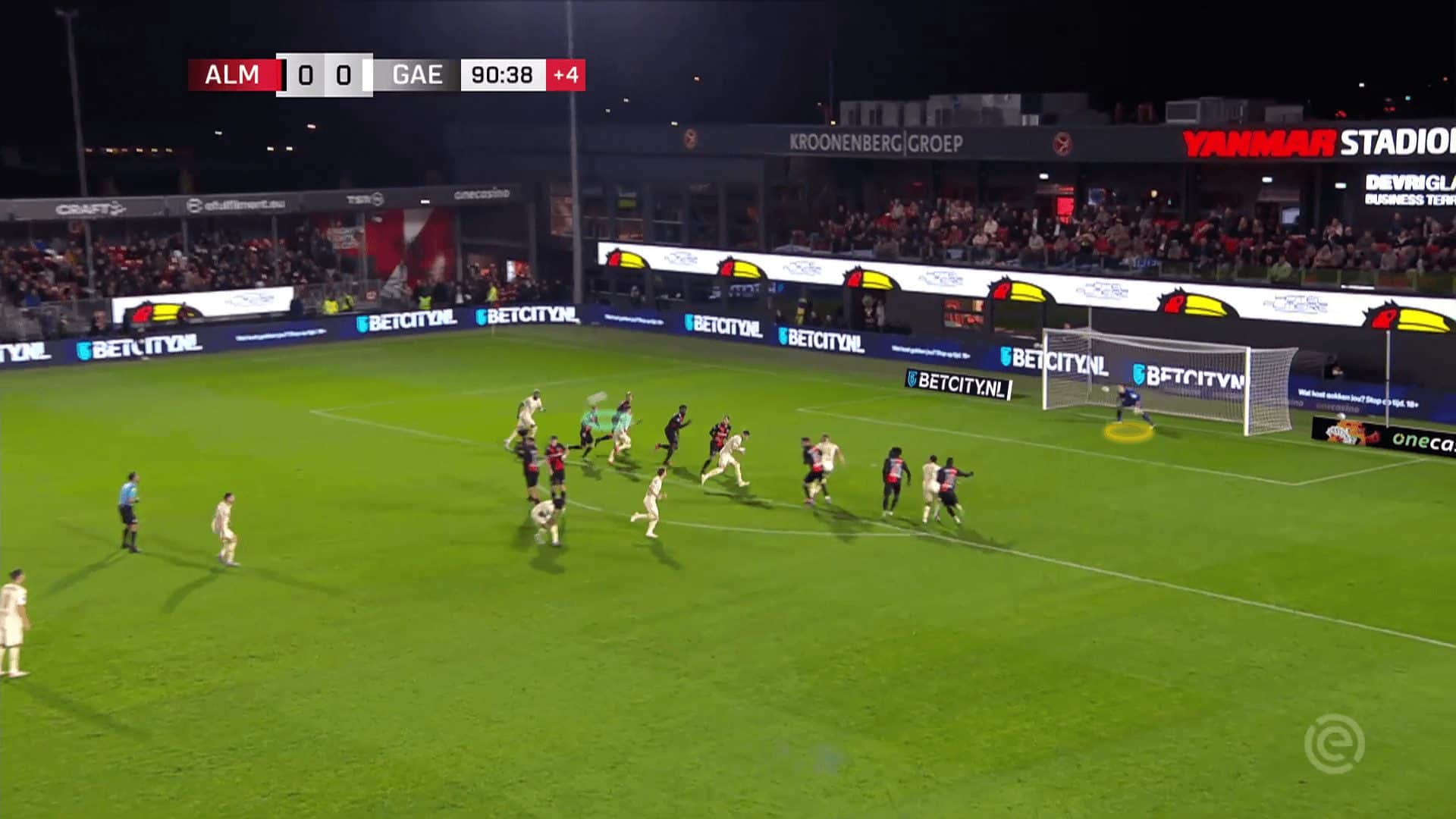
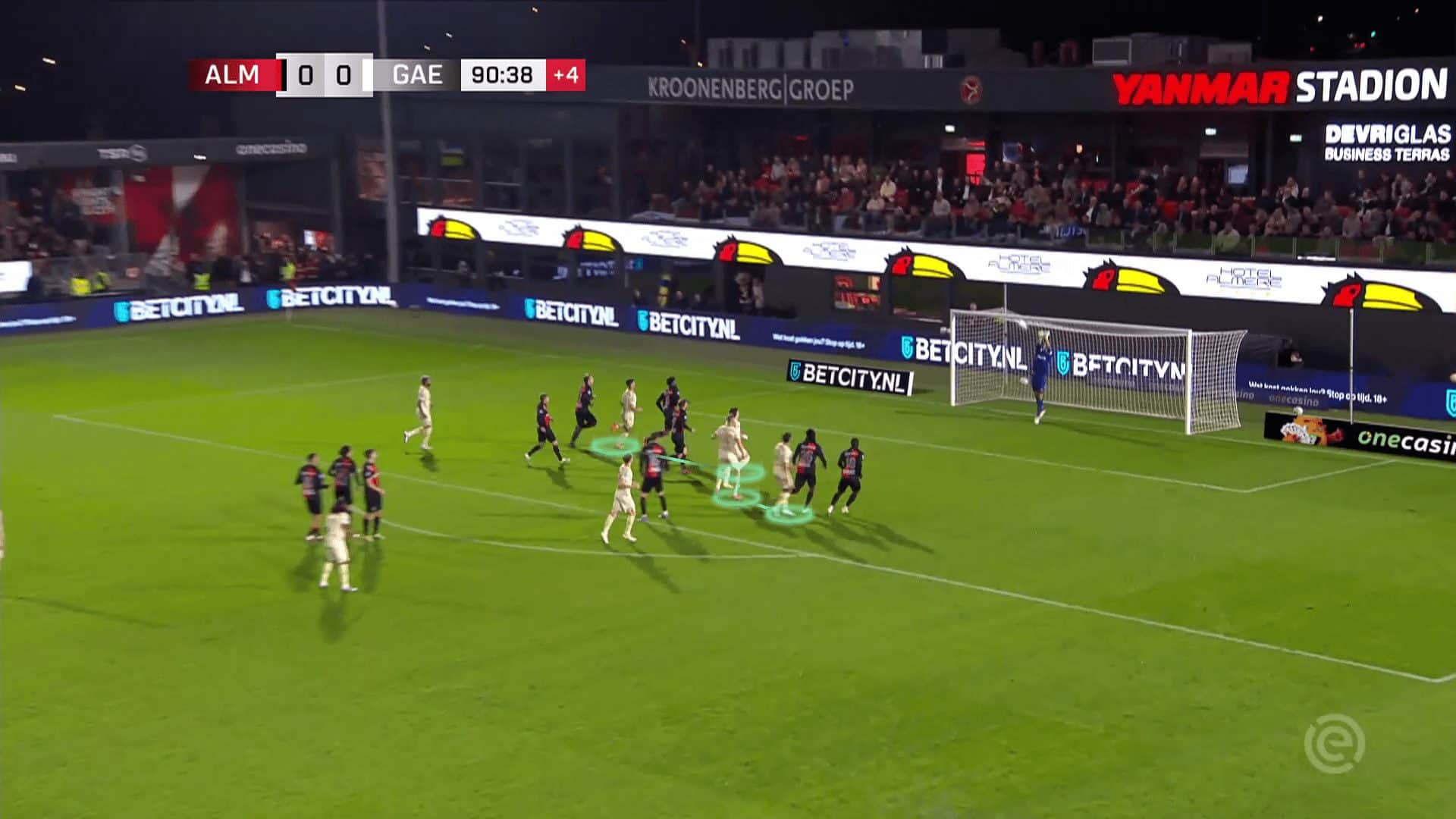
Now we come to the different ideas they have to deceive the goalkeeper. One of them is starting without a wall, but a player moves suddenly from an off-side position without marking to adjust his position between the ball and the goalkeeper to prevent him from seeing the ball starting to move after the ball crosses the wall to make his reaction late, as shown in the fourth photo.
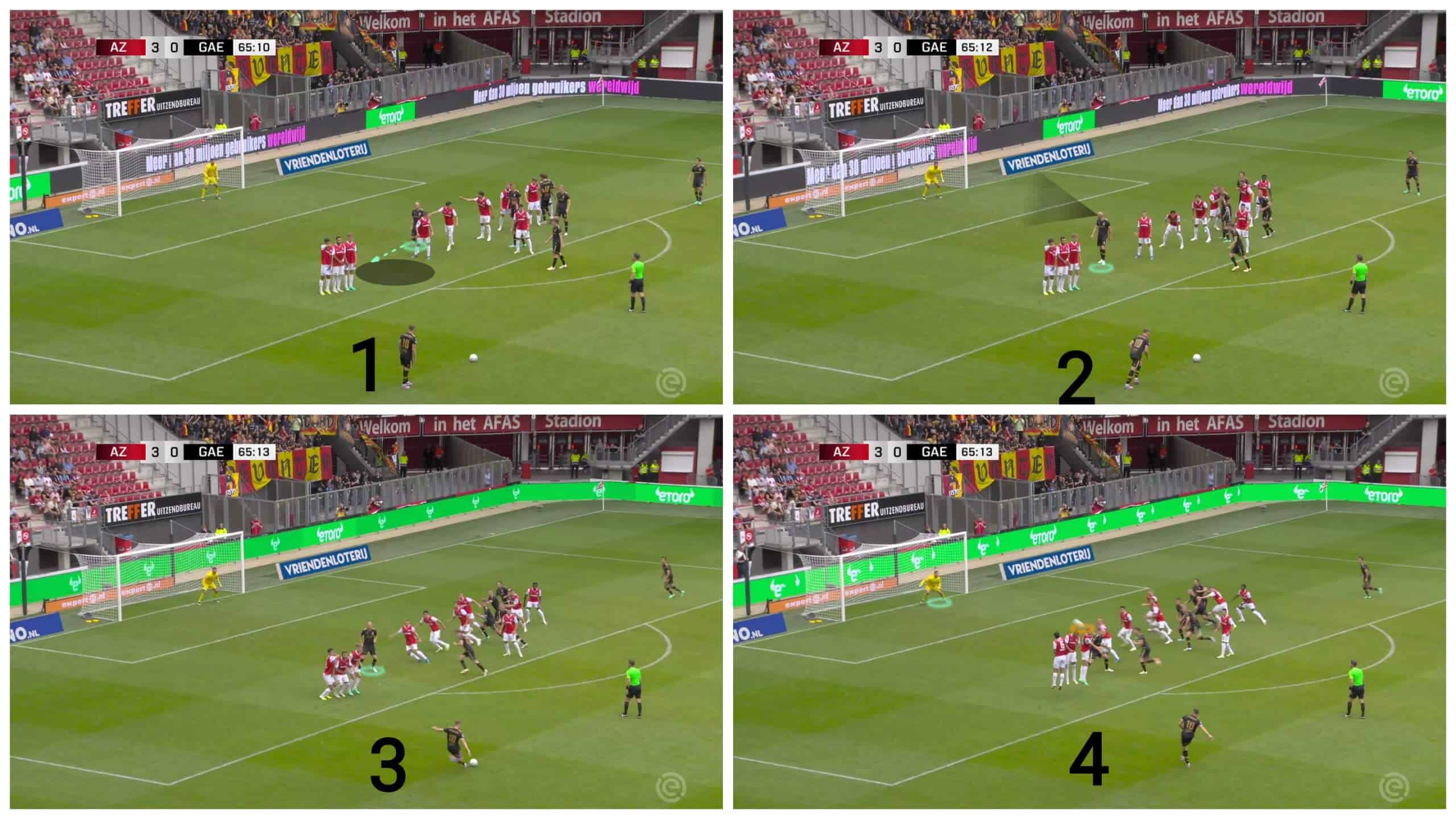
The result is a goal because although the shot isn’t in the corner of the goalmouth, the reaction is late.
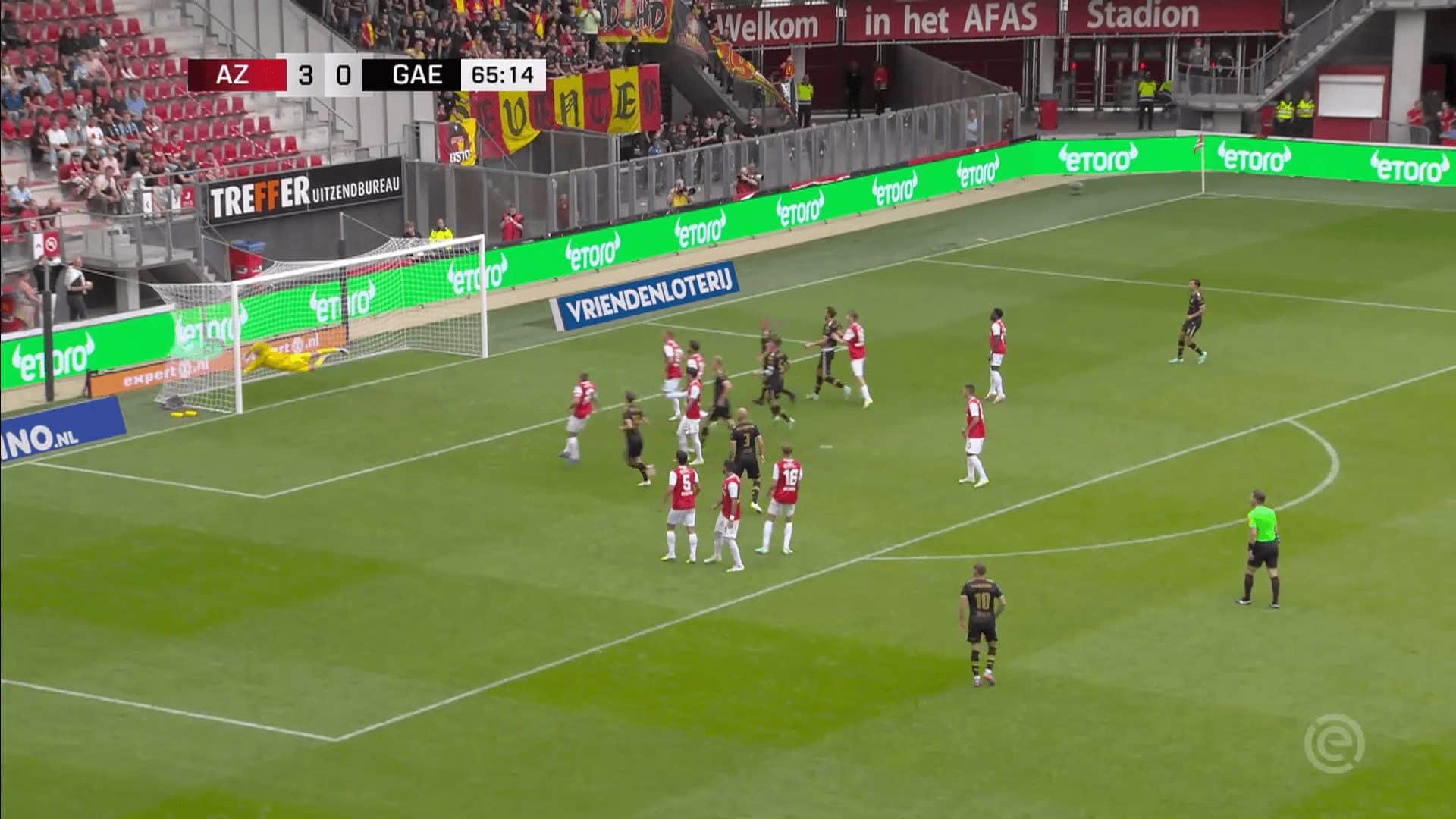
They also have another idea below where the wall player changes his position as the taker moves. Hence, the goalkeeper becomes confused, guessing that the taker will shoot through this gap and step in our left direction, as shown in the second photo. Still, the taker shoots the ball through the new position of the wall player, so the goalkeeper goes late to the ball, and the result is a goal.
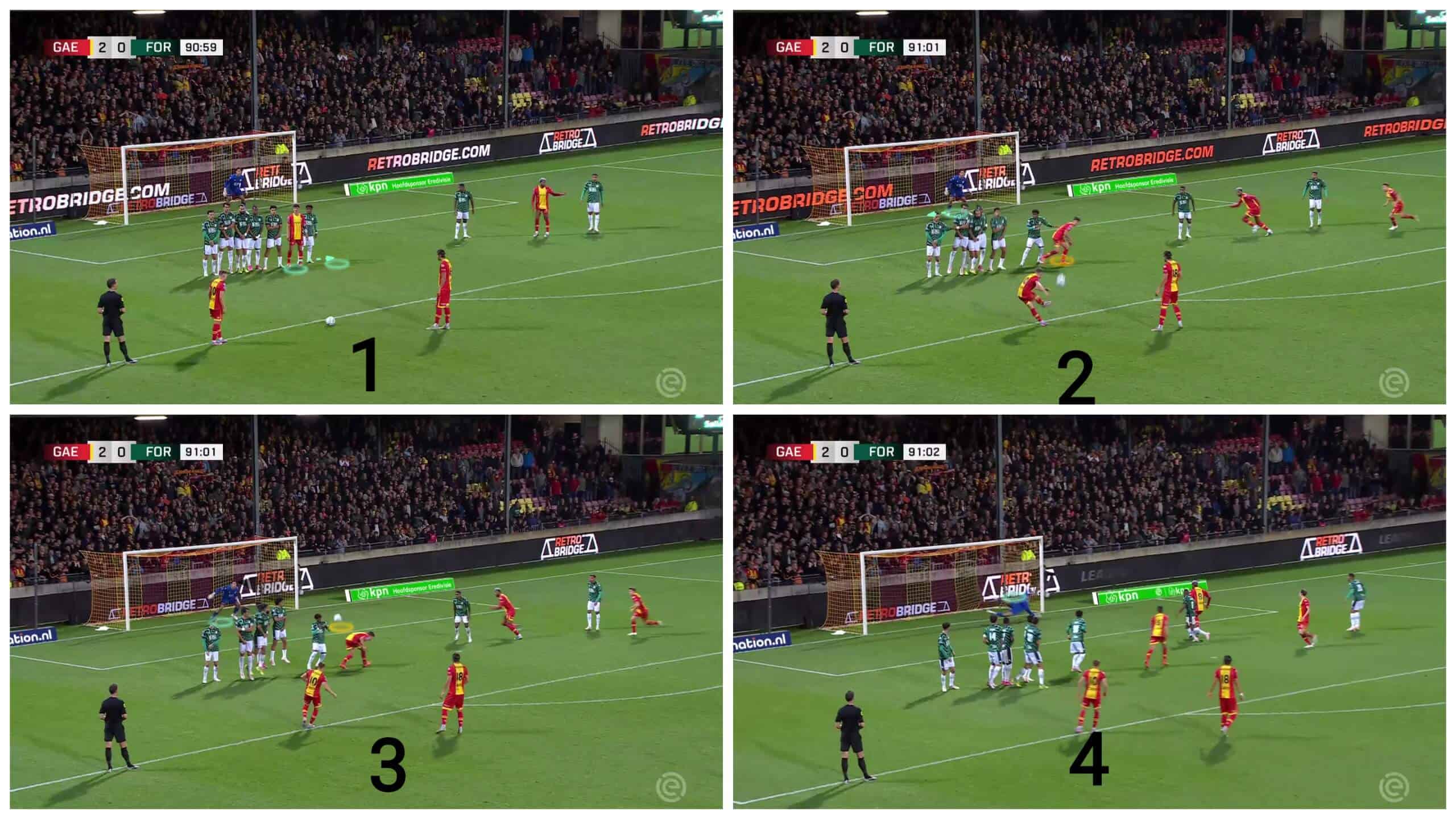
Conclusion
In this analysis, we have explained how Go Ahead Eagles was distinguished in creating danger from set-pieces from long distances without engaging in many aerial duels and how they excelled in that to become the team that scored the most goals from set-pieces in the league with the leader PSV.
In this set-piece analysis, we have explained how Go Ahead Eagles exploited the offensive corners by targeting the rebound area directly or after several short passes and how they distracted the opponent’s goalkeepers to delay their reaction in direct free-kicks.

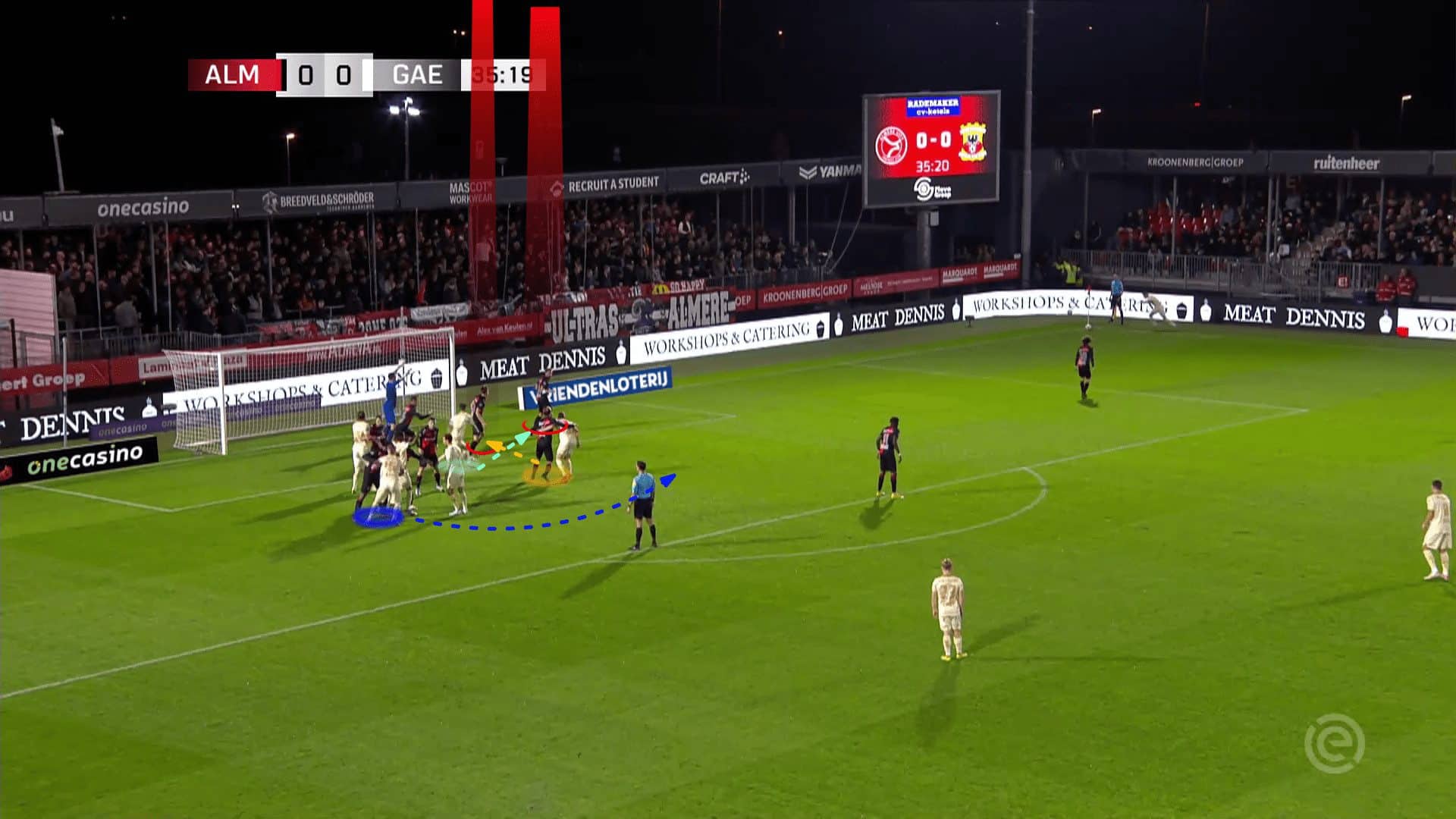




Comments